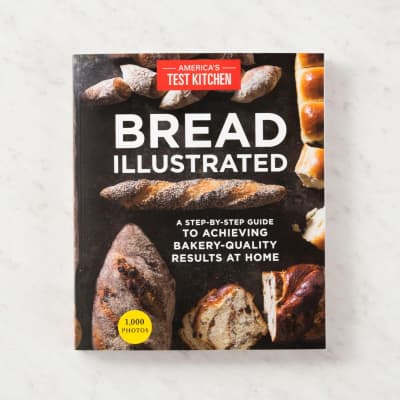If there was ever a bread that would make you want to bury your face in its pillowy softness, it’s shokupan, the Japanese white bread baked in a Pullman pan.
Yudane and Tangzhong: Bread-Baking Techniques for Ultraplush Bread
Published Nov. 28, 2022.

This bread commonly achieves its extraordinary texture through a baker’s magic trick of sorts: a paste of flour and water that gets mixed into the dough, maximizing the amount of moisture it can hold.
The paste can be made through one of two very similar techniques. Both share the same characters— 湯種—but in English, one is known by its Japanese name, "yudane," and the other by the Chinese name "tangzhong."
Sign up for the Cook's Insider newsletter
The latest recipes, tips, and tricks, plus behind-the-scenes stories from the Cook's Illustrated team.
How Yudane and Tangzhong Work
When making bread, you can only mix so much water into the dough before it becomes so sticky and floppy that it’s impossible to shape. That puts limits on how moist and tender the final bread will be—and how long it can stay that way.
But the yudane and tangzhong methods each allow you to incorporate more water into the dough without making it overly wet and hard to handle.
The essential tactic is to cook some of the flour with some of the water, creating a sort of pudding in which water is trapped by gelled starch so that it can't make the dough too loose. That mixture, with its secret cargo of water, is then combined with the rest of the dough and mixed as usual.
When the bread bakes, it becomes wonderfully moist and plush and retains that fresh-from-the-oven quality longer than conventional rolls and loaves.
Both methods can achieve the same outcome, but they are slightly different from one another.
Bread Illustrated
Our first cookbook devoted solely to bread baking highlights more than 100 meticulously tested recipes that will enable you to bake artisan bakery–quality bread at home.What Is the Yudane Method?
In this approach, you precook the starch by stirring boiling water into flour, often in a ratio of 1 part water to an equal weight of flour (the exact proportions can vary), and then you cool the mixture and combine it with the other ingredients to make the dough.
Andrea Geary used the yudane method to great effect in her recipe for Shokupan and Oatmeal Dinner Rolls, allowing her to create a beautifully workable dough that baked into a tender baked good.
What Is the Tangzhong Method?
Tangzhong differs from yudane in how the starch is cooked and because it uses more water, which leads to a wetter, more puddinglike texture. Classically, you combine 1 part flour with 4 parts water in a saucepan; stir and heat the mixture until it thickens.
In our recipes we have developed a microwave tangzhong technique, which we’ve used to produce tender, ultraplush breads in recipes from Andrea Geary’s Fluffy Dinner Rolls, Sticky Buns, and Kanelbullar (Swedish Cinnamon Buns) to Lan Lam’s Easy-Braid Challah.
Watch Lan Lam explain this technique and demonstrate it below.
The History Behind Yudane and Tangzhong
The origins of these techniques are hazy, but the yudane method seems to have originated in Japan (there is a 2001 patent for commercial use of the technique). The tangzhong method was popularized by Taiwanese chef Yvonne Chen in 2007 and thanks to her, became known by its Mandarin name.
In Europe, methods using precooked flour exist in various traditions, such as Scandinavian scalded rye breads.
Are Tangzhong and Yudane Interchangeable?
Although both methods cook flour and water together to create a gelled starch roux, you can't simply swap one for the other when following a recipe, because the amounts of ingredients differ: Tangzhong incorporates up to four times as much water in a dough as yudane does. If you swapped tangzhong for yudane, you'd have to tweak the amounts of flour and liquid in the rest of the dough accordingly.




